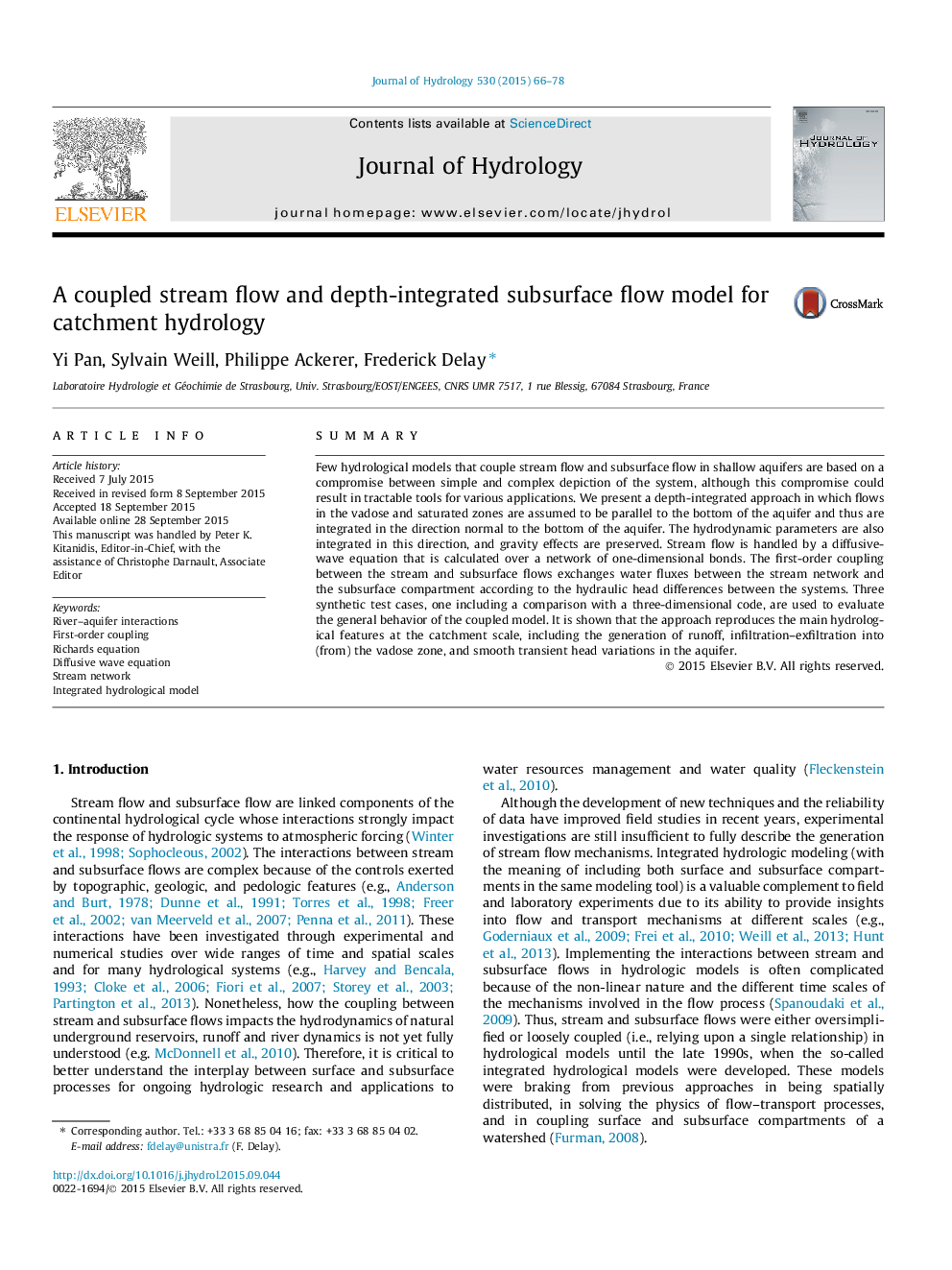| Article ID | Journal | Published Year | Pages | File Type |
|---|---|---|---|---|
| 6410188 | Journal of Hydrology | 2015 | 13 Pages |
â¢Simplifying the geometry of watershed compartments can preserve the physics of flow.â¢Surface flow is mimicked by draining in a ramified network of one-dimensional bonds.â¢Subsurface flow is vertically integrated over both the vadose zone and the aquifer.â¢A simple first-order coupling is enough for modeling surface-subsurface interactions.
SummaryFew hydrological models that couple stream flow and subsurface flow in shallow aquifers are based on a compromise between simple and complex depiction of the system, although this compromise could result in tractable tools for various applications. We present a depth-integrated approach in which flows in the vadose and saturated zones are assumed to be parallel to the bottom of the aquifer and thus are integrated in the direction normal to the bottom of the aquifer. The hydrodynamic parameters are also integrated in this direction, and gravity effects are preserved. Stream flow is handled by a diffusive-wave equation that is calculated over a network of one-dimensional bonds. The first-order coupling between the stream and subsurface flows exchanges water fluxes between the stream network and the subsurface compartment according to the hydraulic head differences between the systems. Three synthetic test cases, one including a comparison with a three-dimensional code, are used to evaluate the general behavior of the coupled model. It is shown that the approach reproduces the main hydrological features at the catchment scale, including the generation of runoff, infiltration-exfiltration into (from) the vadose zone, and smooth transient head variations in the aquifer.
